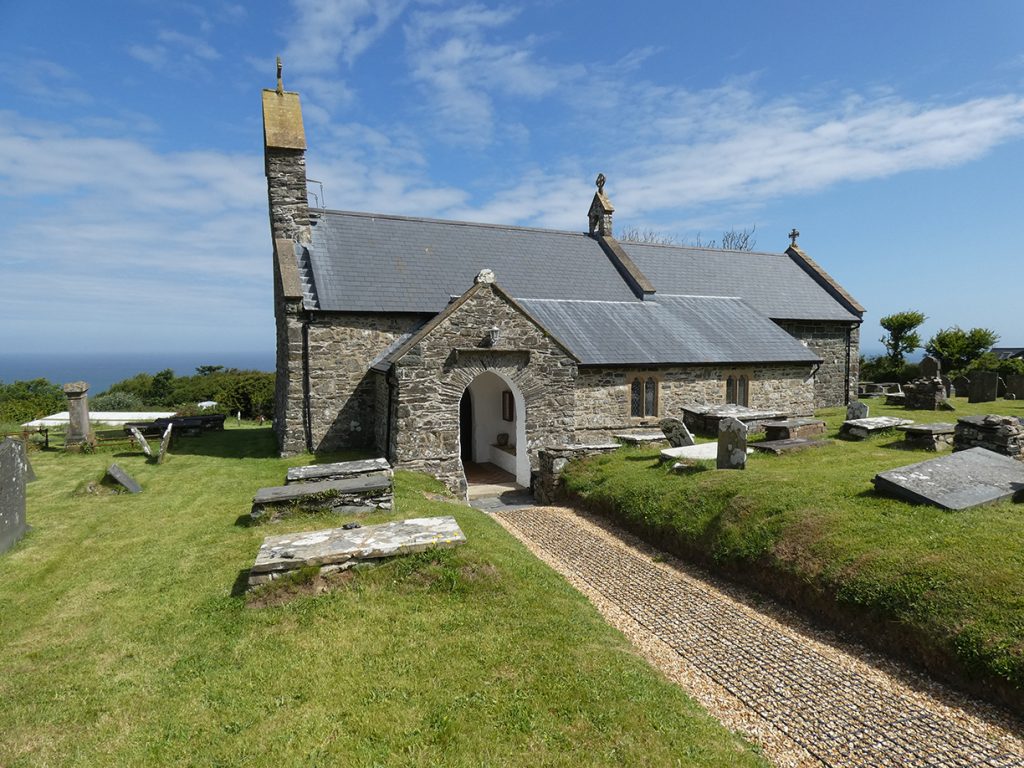
The little village of Llanwnda is at the end of the road, and looks down on the rocky coastline of Pembrokeshire in South Wales. St Gwyndaf came here in the early 6th century and made it a place of monastic retreat, ministering to the people of the Pen Caer peninsular. On the day I visited the little medieval Church was occupied with a eucharist being celebrated, and I could see the vested priest standing at the altar through the squint hole in the porch. A squint hole is a window in the wall of the church which would allow a leper, or some other person unable to attend the services, to see and hear what was happening.

In the walls of the church are six ancient cross marked stones dating from the 7th to 9th centuries and originally marking the graves of early monastics who lived here. Just a few metres from the church is the Holy Well of St Gwyndaf. This is a well cared for monument of stone blocks forming a pool in which fresh water flows. The water of the well would have been used by St Gwyndaf and those who followed him for baptisms of the local people and their children.
St Gwyndaf was of noble blood and came from the British colonies of Northern France in what is now Brittany. When he arrived in South Wales in the early 6th century there was still a great deal of travel and communication between the British people in the West of the British Isles and in North-Western France. His father was King of the British Kingdom of Cornouaille in Brittany, and had himself visited South Wales when a young man in exile. Gwyndaf spent time at the court of the kingdom of Morganwg also in the South of Wales, and while he was there he married Gwenonwy, herself a noblewoman and a saint. She bore Gwyndaf at least two children, a son named Hywyn, and a daughter, Meugan. Both these children also became saints.

In his later life St Gwyndaf became a member of the great monastic community at Llanilltud Fawr and then a principal figure at the monastic community established by St Dyfrig at Caerleon. It was at this time that he retired to the remote seclusion of Llanwnda and built a little church around which a small monastic community gathered, and which served the local communities. Finally, at the end of his life, he retired to Ynys Enlli (Bardsey Island), the famous Island of Twenty Thousand Saints in the North of Wales where he died and was buried.
To visit Llanwnda today is to step back 1500 years into the peace and quiet of the early centuries of Christian Britain which drew St Gwyndaf here. To wash our hands and anoint ourselves with the water of his Holy Well is to bring ourselves into contact with him, and with all those monastics who prayed with him and in the years after him.
May the prayers and blessing of St Gwyndaf be with us all.
